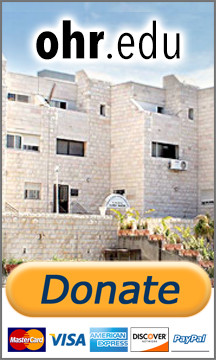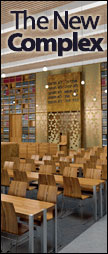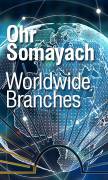Extended Introduction

Extended Introduction
The itself is called
and the Gemara itself
describes the difficulty of maintaining a hold on
with a quote from
-
"" "When you lift (or close) your eyes from it – and it disappears" .
It would certainly be instructive to see what "
themselves prescribe as the method to gain a true understanding and a lasting
in
. The Gemara in
quotes various statements discussing the methodology of
and some recommendations in this respect:
Rav Chisda is quoted as saying: “The Torah can only be acquired with signs.”
Talmud Navigator can be described as an attempt to organize the
in database form by tagging the various components of the text or building blocks of the according to type and hierarchy.
This type of analysis and outlining of a is already discussed by Gedolim of previous generations. The
"
in his "
" suggests a very detailed system of outlining a
. The system suggested by the
"
includes seven main elements or components such as
plus a further subdivision of each component by type, for example:
by
. The detailed segmentation of the
"
could be used to build a broader database in the future, but for now the database includes the initial main components.
This system of textual organization serves as a self aid to outline the in a clearer fashion, to promote a better understanding of the flow of the
of the
and to facilitate summary and review. It would certainly be an ideal tool for the beginning Gemara learner to identify the building blocks of the
and to grasp the logical flow and interconnections of its various components, as well as for the seasoned learner to be used for reviewing and self testing.
There could be many applications for such a database approach to text. As one example, simple Excel macros were written to enable various extractions of segments of the text such as primary or subsequent order to enable a quick summary of the main
in a
, all questions and ensuing answers and all the
.
Another application that has been developed has as its primary goal to enable the learner, beyond seeing and understanding the various components and flow of the , to be able to gain a
in the
he has learned.
It seems that many serious learners of Gemara with all the enjoyment – ‘geshmak’- of the learning process of gaining an understanding of the flow, interconnections and conclusions of a , feel the lack of having a lasting
in what has been learned. The answer is of course doing proper
and, as noted above,
"
found it necessary for us to use
as an aid to a proper
that has a more lasting effect.
To that end the database module of Talmud Navigator was developed, enabling composing or condensed summaries of various forms drawn from the text itself. These
could be in the form of main
,
, questions, conclusions, or personalized anchor points of the
determined by the learner himself to facilitate his own
being as sparse or as detailed as needed for memory and comprehension.
:- Symbols by segment type
▀ - statement
¿ - challenge
^ - question
! - answer
■ - proof
♦ - disputants
◊ – central point for summary and review
> – insertion of an earlier segment
О - story






